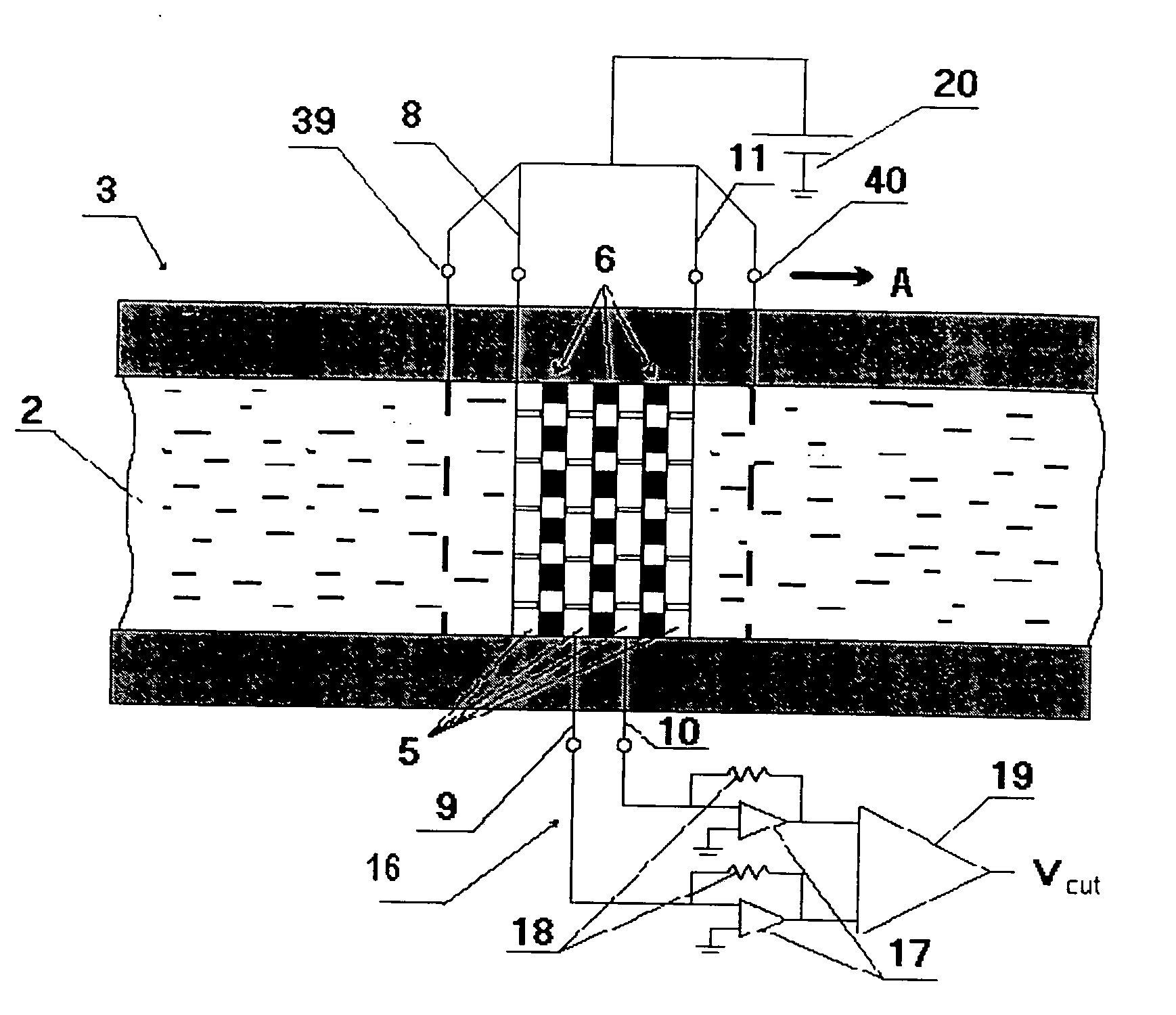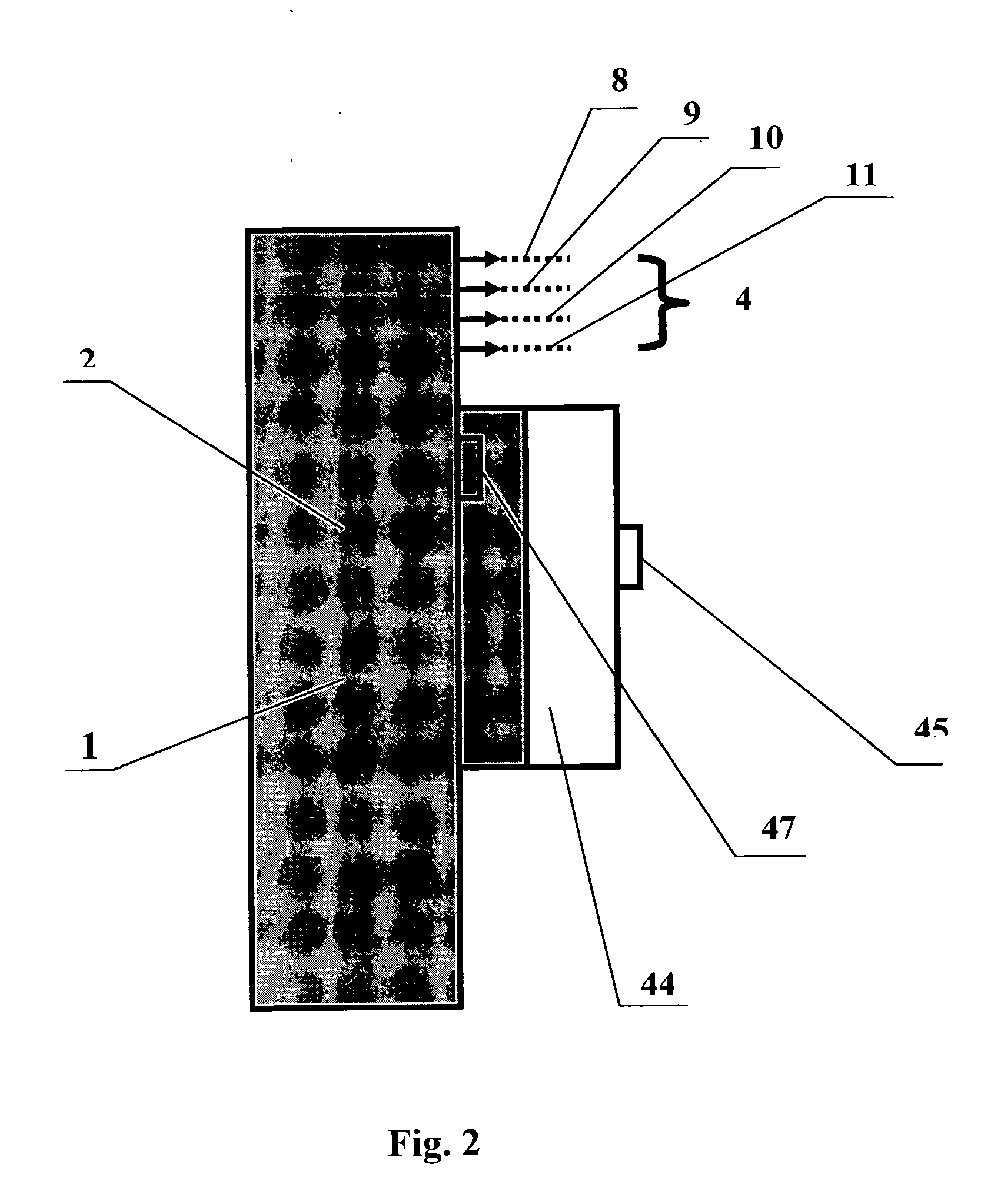Convective accelerometer
a technology of accelerometer and convective measurement, which is applied in the direction of speed/acceleration/shock measurement, fluid speed measurement, instruments, etc., can solve the problems of high cost, bulky instruments and high cost, and achieve low cost in volume production and simple design
- Summary
- Abstract
- Description
- Claims
- Application Information
AI Technical Summary
Benefits of technology
Problems solved by technology
Method used
Image
Examples
example 1
[0097] This example provides an angular accelerometer having a single installation module. The installation module was installed in a toroidal sealed housing having the following parameters: [0098] 1. diameter: 9 mm [0099] 2. channel size: 2×2 mm, [0100] 3. value of e: zero.
[0101] The sensing element contained 4 electrodes that were separated by 3 spacers. The electrodes were 30 μm thick metal plates that had an area of 2×2 mm and nine circular holes with a diameter of 200 μm. The spacers were 45 μm quartz plates with an area of 2.5×2.5 mm. The spacers also had nine circular holes with a diameter of 200 μm.
[0102] The transfer function of the accelerometer was measured using a rotational oscillating shake-table (IMV, Japan) for the 20-1000 Hz frequency range and a rotational oscillating calibrator provided for these tests by Center for Molecular Electronics (CME), Russia for the 0.08-40 Hz frequency range.
[0103] The IMV shake-table was driven at constant angular acceleration in th...
example 2
[0110] One of the critically important uses of the claimed convective accelerometer is for improving homeland security. Towards this goal, the accelerometer may be used in many ways. Three non-limiting examples are described here: intruder detection, intruder identification, and remote lie-detection.
[0111] With respect to intruder detection, the high sensitivity of the claimed convective accelerometer permits remote sensing of the presence of an intruder, even through the walls and floors of a building, by detecting the intruder's footsteps and / or physiological signals, such as heartbeat and respiration. Such detection is possible even in noisy urban settings, by using signal processing procedures well known in the art, (e.g., derivative spectra). FIG. 26 shows the signature of a person walking, as recorded by a rotational accelerometer mounted to the floor. Note that it is possible to distinguish separate steps (marked by the arrows) of the person, even though he was was walking o...
example 3
[0114] This example shows that the convective accelerometers according to this invention may be adapted for use in seismic applications, such as seismic imaging or oil exploration. In particular, the rotational accelerometers as described herein can be adapted to measure the differential seismic field, or, more accurately, the curl of the displacement field directly. In contrast, prior measurements of the differential seismic field were indirect and required two spaced linear sensors and a series of calculations based on the outputs of the linear sensors.
[0115] By using a combination of linear and rotational accelerometers as described herein, it is possible to obtain substantially more information on subsurface geological conditions by 3D high-resolution seismic measurements. Unlike a conventional geophone, which is only capable of recording the first arrival of a seismo-acoustical signal, the combination of rotational and linear convective accelerometers separately capture the bo...
PUM
 Login to View More
Login to View More Abstract
Description
Claims
Application Information
 Login to View More
Login to View More - R&D
- Intellectual Property
- Life Sciences
- Materials
- Tech Scout
- Unparalleled Data Quality
- Higher Quality Content
- 60% Fewer Hallucinations
Browse by: Latest US Patents, China's latest patents, Technical Efficacy Thesaurus, Application Domain, Technology Topic, Popular Technical Reports.
© 2025 PatSnap. All rights reserved.Legal|Privacy policy|Modern Slavery Act Transparency Statement|Sitemap|About US| Contact US: help@patsnap.com



